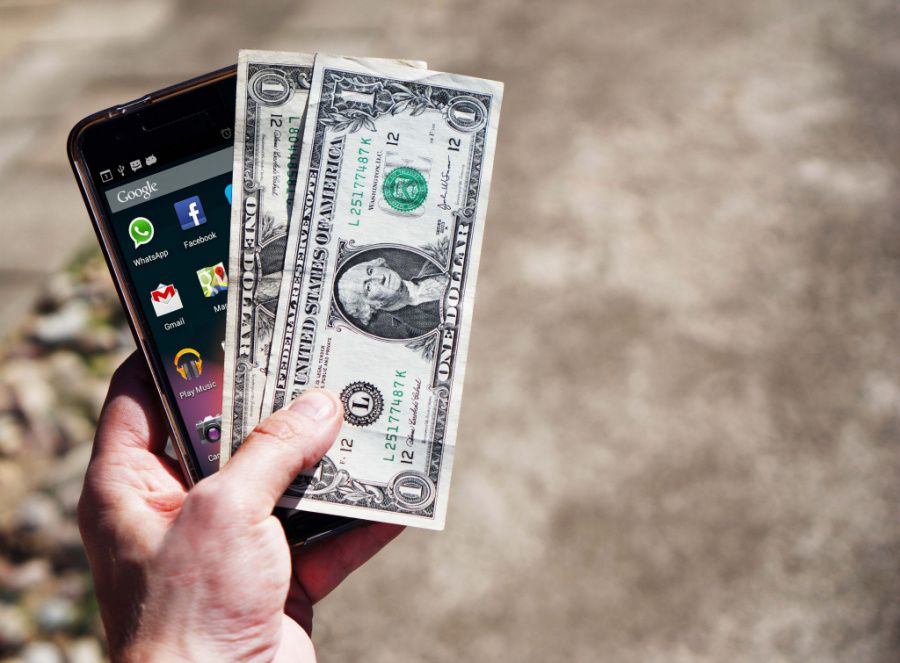Mobile Money will Dominate Transactions by 2025; the Progress is Unstoppable

Mobile payments adoption is growing worldwide. Owing to global digitization, the share of mobile payments in transactions is expected to reach 89% by 2025.
Due to the increase of mobile money transfers, the digital domestic money transfer transaction value is projected to hit about $3.4 trillion by 2025, as per the report by Juniper Research. The soaring number of mobile users and peer-to-peer payments are triggering a widespread boom of mobile cross-border payment services.
Presently, there are over 315 live mobile money services. Over 55.5% of them are located in the African continent. As per a report by GSMA, MoMo services are accessed in a variety of markets where access to monetary services is still low and the unbanked population is high. Worldwide transaction value soared by 22.5% during the pandemic to hit about $767 billion, with 65% in Africa.
Some of the types of mobile payment (mp) systems include; mobile browser-based payments, in-app MPs, mobile or wireless credit card readers, and contactless mobile payments or mobile wallets. Some of the most commonly used mp methods that are accepted globally include cryptocurrencies such as Bitcoin, Ethereum, Binance Coin, credit and debit cards, mobile wallets like PayPal, MasterCard PayPass, Apple Pay, Android pay, Visa Checkout, and others.

Covid-19 pandemic accelerated the growth of cashless transactions
During the period of the Coronavirus pandemic, there has been a significant increase in the use of mobile transactions. Even before the pandemic, there has been a steady increase in the proximity of mobile payment transaction users (PMPTU) globally. About 24% of online merchants were accepting mobile wallets in 2015, and the number increased to about 29% by 2018, as per the data by Statista.
About 440 million and 760 million users utilized MPs to pay bills, send or receive money while using their smartphones, tablets and other mobile devices in 2018 and 2020, respectively. Today, there are about 24 million e-commerce platforms worldwide and these sites are projected to make about $4.5 trillion in sales annually starting with 2021.
Due to the increased use of contactless payment alternatives including digital currency, with the recommendation from the governments and health organizations like WHO, the number of people using cryptocurrencies has increased to over 100 million. The users who are highly interested in using these digital currencies are majorly baby boomers, millennials and Gen Xers. All in all, millennials are the biggest adopters of MP methods because most of them are tech-savvy and comfortable using these disruptive fintechs.

China is leading the digital payments revolution
China still dominates other countries in using proximity mobile payments, thanks to technology giants Alibaba, Tencent, Alipay, Tenpay, etc., that are slowly revolutionizing the cashless society by significantly pioneering digital merchant payments in the country. In 2017, about 890 million unique digital payments users in China accounted for about 90% of the $17 trillion MP market. By 2019, more than 81% of smartphone users in China conducted a proximity mobile payment in a 6 month period.
Denmark follows China with over 41%. By 2019, there are about 950 million PMPTUs globally and the number is projected to touch about 1.31 bln by 2023.
The US had a proximity mobile payment usage penetration (PMPUP) of about 29% back in the year 2019. In the same year, China had a PMPUP of nearly 81%, and this shows a relatively slow use, embracement and adoption of MP services including digital currencies such as Bitcoin in the US compared to China. The United States expects to generate about $220 bln in transaction value by the year 2023 and the US PMPTU is expected to be more than 70 mln before the end of this year (2021).
Although digital payment alternatives present a wide range of benefits including convenience, flexibility, cost-effectiveness, time-efficiency, transparency, most mobile users still fear to make payments using mobile wallets and mobile devices such as smartphones because of major concerns related to safety and privacy. As one way to prevent the Coronavirus plague, the migration from tradition to digital monetary systems including cryptocurrency, CBDC and mp is being highly encouraged at an extraordinary rate.
Price
Price
Price
Price
Price

(0 comments)